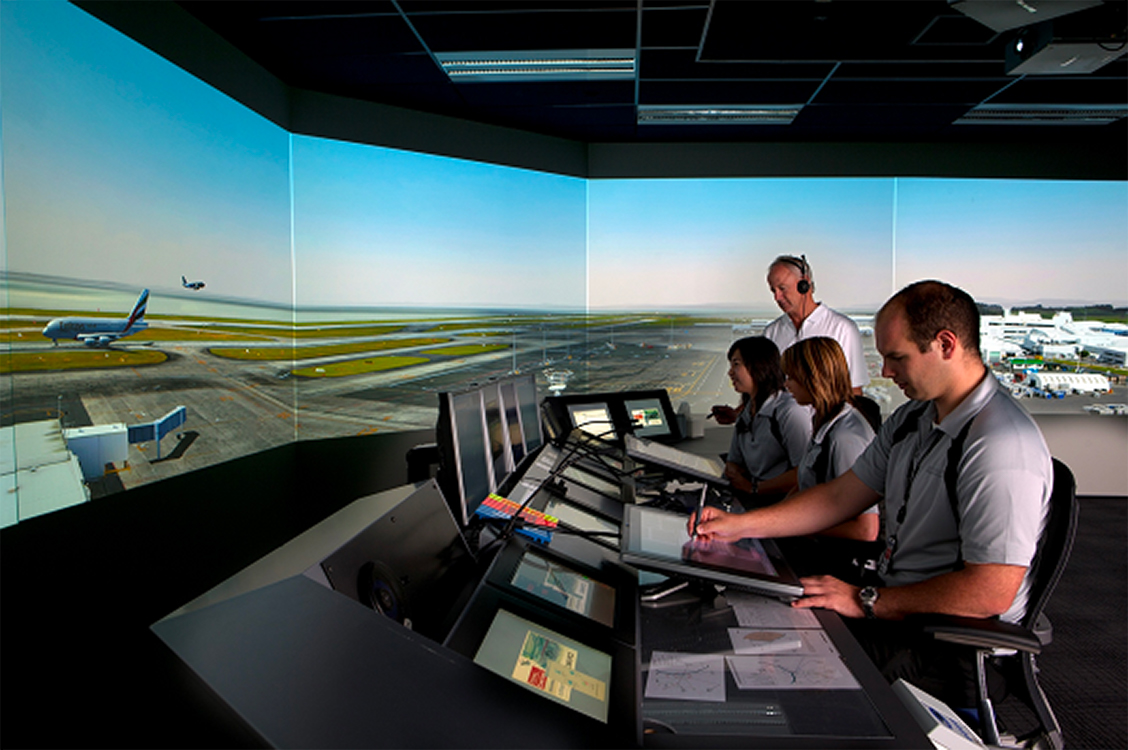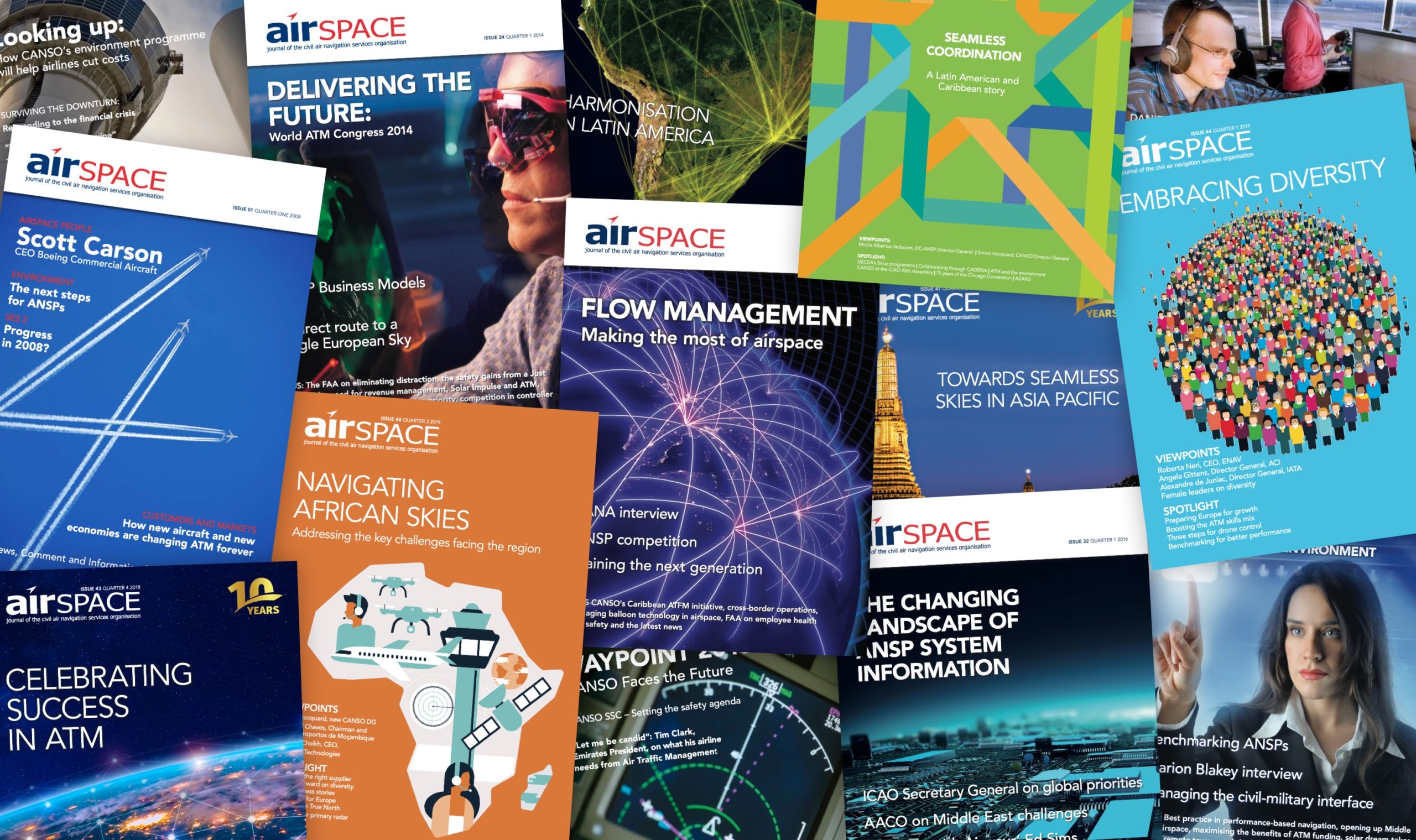Keeping climate change front and centre

Air Traffic Management has a crucial role to play if aviation is to achieve net-zero carbon emissions.
Sustainability has become even more important post-pandemic as the aviation industry strives to build back better. Customer expectations have changed, and all aviation stakeholders will need to establish green credentials.
A new long-term industry climate goal of net-zero carbon emissions by 2050 is a big step forward. CANSO is fully supportive of the measure.
“Sustainability is becoming the global issue for aviation,” says Simon Hocquard, Director General, CANSO. “With many environmental gains hedging on sustainable aviation fuels, hydrogen and electrification of aircraft it is vital we fast-track air traffic management improvements while carbon-based fuels are still commonplace. CANSO and the ATM industry stands ready to play its part in meeting this ambitious goal.”
Going green
Air traffic management’s biggest influence will be optimising flights as much as possible, reducing aircraft time in the sky and so limiting emissions from fuel burn. Many of the current initiatives from performance-based navigation to air traffic flow management will lend themselves to this effect. According to EUROCONTROL, for example, horizontal flight efficiency within Switzerland for 2020 was more than 99% and routes flown were an average of just 1.2 kilometres longer than absolutely necessary.
But the work doesn’t stop there and there are many other examples of ATM “going green”. With the environmental pressure greatest in Europe, not surprisingly ANSPs in the region are among the world leaders in environmental programmes.
Swiss ANSP, Skyguide, is part of Switzerland’s Exemplary Energy and Climate initiative, which aims to increase energy efficiency and expand renewable energies by 2030. According to the Exemplary Energy and Climate 2013-2020 Report, Skyguide increased its energy efficiency 52.4% from 2006 to 2020.
Part of Skyguide’s environmental work includes reducing business travel to a minimum between its 14 locations. To keep communications open, there are state-of-the-art-conference rooms. Skyguide also encourages its staff to travel to work by public transport by issuing half-fare rail cards or subsidising local and regional season tickets. Moreover, employees have all the tools needed to work remotely.
The Swiss ANSP has even invested in drones to calibrate automatic landing systems (ILS). More than half of the regular calibration efforts are done using drones, which will reduce annual CO2 emissions by 142 tonnes and cut energy consumption 541 MWh/y by 2022. The company is aiming for a 70% cut in CO2 emissions from calibration flights from 2023.
The Perfect Flight
A “Perfect Flight” was conducted between Heathrow and Glasgow in the UK on 14 September 2021. The trial was led by British Airways and involved Heathrow and Glasgow airports, Airbus and bp. UK ANSP NATS optimised the flight profile and provided the most direct routing.
The flight reduced CO2 emissions 62% compared with a previous Perfect Flight more than a decade ago.
Controllers gave the flight the shortest possible taxi route to the nearest runway and take-off timing was relayed promptly so that the engines were not started up too early. A runway intersection clearance meant the pilot did not need to use the full length of the runway for take-off, again increasing efficiency. Similar measures were put in place all the way to the gate in Glasgow.
The data from the flight is being analysed to fully understand how the procedures can be implemented in everyday operations.
“We learn a lot from projects like this, which can inform future airspace designs and ultimately make UK skies more sustainable,” says Ian Jopson, Head of Sustainable Operations, NATS. “We have pledged to fully support the aviation industry’s commitment to achieve net zero carbon emissions by 2050 and demonstrations like the Perfect Flight are an important step to achieving that.”
Climate leader
Meanwhile, the Irish Aviation Authority, the Irish ANSP, aims to be 100% sustainable and fully carbon-neutral by 2025.
IAA Chair, Rose Hynes, says that the commitment would set an example for the aviation sector. “We have developed an ambitious plan that will see the ANSP not only become a climate change leader in Ireland, but also a global leader for sustainable aviation,” she notes. “Aviation is a vital enabler of growth and development of the Irish economy. This importance will be highlighted as we seek to recover from the impacts of the COVID-19 pandemic.
“However, we must ensure that the climate challenge is also addressed in parallel, and that sustainable aviation supports a sustainable carbon-conscious economy.”
Among its objectives will be the procurement of renewably sourced electricity, reducing waste generation and offsetting and reducing business travel
Meanwhile, a EUROCONTROL think paper, Greening European ATM’s Ground Infrastructure, has concluded that “decarbonising European ATM’s ground infrastructure could deliver large potential emissions savings on an annual basis, providing strong support to aviation’s overall decarbonisation goals. For this to happen, ANSPs would need to seize the right moment in their investment cycles to replace energy-inefficient equipment, and to accelerate the switch to renewable energy sources”.
The think paper estimates that European ANSPs consume 1,140GWh of electricity annually. Switching to renewable energy over the next decade could save 311,000 tonnes of CO2 equivalent emissions annually or more than 6.2 million tonnes by 2050.
The work is already underway. Belgian ANSP, skeyes, has used 100% green electricity since 2015, and has approved the installation of a solar farm. Italian ANSP, ENAV, plans to switch to renewable sources to reduce its emissions from purchased energy 96% by 2022 compared with 2019. It will also reduce energy consumption 30% by 2030.
These examples show that there is little doubt that ground infrastructure can be progressively decarbonized in the decade ahead. Combined with other initiatives – be it simply reducing business travel or grander schemes involving new technologies and flight procedures – it is clear that ANSPs are already making a significant contribution to reducing carbon emissions and will achieve even more notable successes as the industry heads towards it 2050 target.
The actions taken by European ANSPs to reduce their environmental impact by delivering more efficient airspace solutions are paralleled by a growing number of initiatives to reduce the carbon footprints generated by their energy consumption.
But there is always more to do. The estimates in the EUROCONTROL paper are a first attempt to quantify the total potential emissions saving that greening Europe’s ATM ground infrastructure could achieve over the course of the next decade, and are designed to stimulate decision-making in the years ahead.



